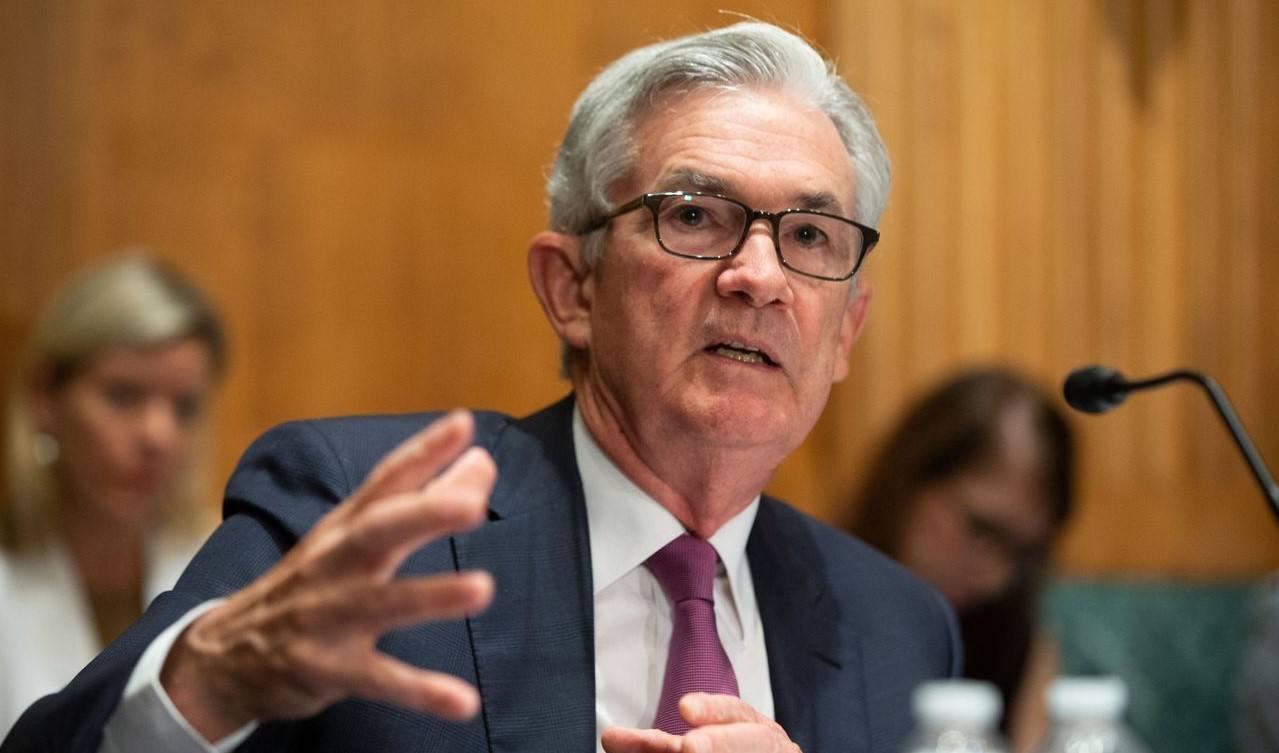
The resilience of European markets over the past few weeks has been impressive given the challenges that are being posed, and likely to continue to be posed by record level gas prices, with the FTSE100 and DAX both eking out fresh two-month highs yesterday.
US markets underwent a slightly more mixed session, with the S&P500 closing off its intraday highs after finding the bar to further progress blocked by the 200-day SMA, and trend line resistance from the highs this year, while the Nasdaq 100 finished the day lower.
Today’s European session, which looks set to see a positive open, will see traders focus on the latest UK inflation numbers, US retail sales and FOMC minutes.
Having seen wage growth including bonuses in the UK rise by 5.1% in June, and 6.4% in May it is becoming clear that the higher number is being boosted by employers making one-off bonus payments to employees to help mitigate the effects of the cost of living, while normal wages rose by 4.7%. While welcome, the numbers are still lagging behind broader headline inflation and are likely to continue to do so, as UK consumers become increasingly worse off in real terms.
Last week we saw US CPI retreat from 40-year peaks, however this doesn’t seem likely here in the UK. Today’s inflation numbers are likely to reinforce this gloom further, especially since food inflation rose again in July rising to 11.8%, according to Kantar in data released yesterday.
Having hit another record high of 9.4% in June, today’s UK CPI numbers look set go higher, perhaps even reaching 10%, as rising prices become more entrenched. We did see core prices slip back to 5.8% in June, but this looks unsustainable, given that we saw further rises in PPI input and output prices, suggesting that more pain is coming down the line. PPI input prices rose to an eye-watering 24% in June. The old RPI measure is expected to rise to 12%, and its highest level since late 1981.
Now that the Bank of England has belatedly recognised that more needs to be done to try and counter the surge in prices by raising rates by 50bps earlier this month, another strong number today will probably seal the prospect of another 50bps rate rise in September.
It is true that there is little the central bank can do about the rise in food and energy prices, however even with food and energy stripped out, core prices are still well above the banks headline target of 2%, and with companies now starting to pass price rises on, inflation is beginning to become much stickier.
It’s also an important day for US markets with questions continuing to get asked about the resilience of the rebound off the June lows. Today we have the latest retail sales numbers for July and the latest FOMC minutes.
With the US economy now confirmed to be in a technical recession, one area that has been shown to be quite resilient has been the US consumer.
US retail sales have been positive every single month this year, apart from a modest -0.1 fall in May. If higher prices are deterring consumer spending, it’s not immediately obvious in these numbers.
In June, US retail sales rose 1%, beating expectations of 0.9%, with the control group measure rising to 0.8%, after a decline of -0.3% in May. With the US labour market continuing to add positions in monthly payrolls data, there is no reason to suppose that this trend of positive retail sales won’t continue, with forecasts of 0.3% in this week’s July numbers.
There is one note of caution in that consumer confidence is fragile and consumer credit has been soaring. Recent profits warnings from Walmart who reported yesterday, and Target who report today suggest consumer spending patterns are changing, and more spending is being done on credit cards. This raises the question, is consumer credit fuelling this resilience in retail sales. The data appears to suggest so which means it may not be sustainable in the longer term.
After Europe has closed, we get the latest Fed minutes which could prove to be instructive as to whether there was a discussion about what level policymakers saw as the “neutral rate” in the wake of their decision to raise rates by 75bps to 2.25% to 2.5%.
It was Fed chair Jay Powell’s press conference that posed more questions than answers. He opened by saying that the Fed still sees inflation as way too high, and that the committee was highly attentive to inflation risks was all very much on point. He then went on to say that at current levels the Fed Funds rate is in the range of what they think is neutral, which raised more than a few eyebrows, prompted bond yields to fall quite sharply, raising the idea that the Fed might be tempted to pivot in the face of a slowing economy.
With inflation already well above target, this tack on neutral was at odds with the end of year June projections for a policy rate of well over 3.4% by year end, and Powell’s insistence that they want to see clear evidence that inflation is under control, which it clearly isn’t.
Powell went on to insist that the US economy was not in recession, and that despite concerns over rising prices the Fed would be guided by the data.
Nonetheless the genie was out of the bottle and the equity market has been rising ever since as markets price the prospect that the Fed could well start cutting rates sometime next year.
Since that dovishly construed press conference, we’ve had a series of Fed speakers from San Francisco Fed President Mary Daly to St. Louis Fed President James Bullard push back on that interpretation with Daly saying the Fed is “ nowhere near” done when it comes to tackling inflation while Bullard says he sees a Fed funds rate of 3.75% to 4% by year end.
It seems more than likely that today’s minutes are likely to be interpreted from a hawkish perspective, given that it is likely to be harder to read between the lines. In any case, however tonight’s minutes are interpreted the biggest steer for September will come next week at Jackson Hole when Powell has the opportunity to put the pivot genie firmly back in its bottle.
EUR/USD – fell to the 1.0120 level yesterday, before rebounding. The 1.0220 area now becomes minor resistance, followed by major trend line resistance from the January highs at 1.0340. While below these levels the bias remains for a retest of the previous lows at 0.9950.
GBP/USD – has so far managed to hold above the 1.2000 level which would be the RHS of the possible inverse H&S formation with the neckline at 1.2270. A break through 1.2300 targets a move towards 1.2600. A move below the 1.1960 area targets the July lows.
EUR/GBP – while below the resistance just below the 0.8500 area, the bias remains for a move below support at the 0.8400 area and a retest of the 0.8340 area.
USD/JPY – currently within cloud range with support at 132.00, and resistance at 135.40- and 50-day SMA. Below 131.60 targets the 130.20 area.
Disclaimer: CMC Markets is an execution-only service provider. The material (whether or not it states any opinions) is for general information purposes only, and does not take into account your personal circumstances or objectives. Nothing in this material is (or should be considered to be) financial, investment or other advice on which reliance should be placed. No opinion given in the material constitutes a recommendation by CMC Markets or the author that any particular investment, security, transaction or investment strategy is suitable for any specific person. The material has not been prepared in accordance with legal requirements designed to promote the independence of investment research. Although we are not specifically prevented from dealing before providing this material, we do not seek to take advantage of the material prior to its dissemination.























